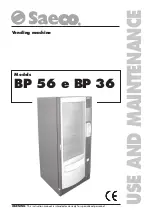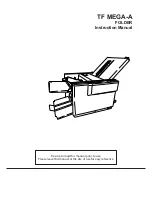Reviews:
No comments
Related manuals for Prisma 990

Solaris VISION BLSA3
Brand: Baby Lock Pages: 20

15000
Brand: Janome Pages: 5

B-1500
Brand: Pacific Pages: 8

1243-712/02
Brand: Pfaff Pages: 56

BP 56
Brand: Saeco Pages: 36

Industrial Floor Stripper
Brand: Samurai Pages: 28

LS2-H6000-D
Brand: Unicorn Pages: 18

755 B
Brand: Dürkopp Adler Pages: 374

NC81200 CLASSES
Brand: Carpet Sergers Pages: 30

TF MEGA-A
Brand: Hefter Pages: 71

KX-TGE274S
Brand: Panasonic Pages: 2

KX-TM150ALB
Brand: Panasonic Pages: 19

KX-TGA939
Brand: Panasonic Pages: 16

KX-TM85B
Brand: Panasonic Pages: 36

KX-TM80B
Brand: Panasonic Pages: 36

KX-TM150B
Brand: Panasonic Pages: 40

KX-TGC220AL
Brand: Panasonic Pages: 44

KX-TGC460E
Brand: Panasonic Pages: 48






















